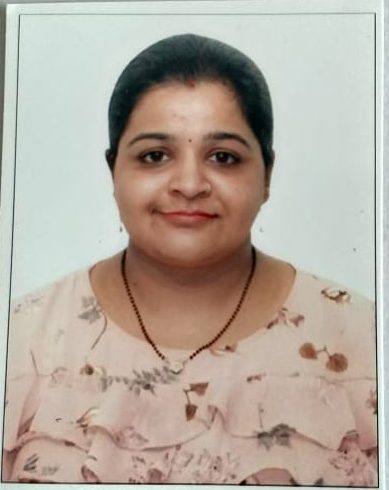I will never forget the agony that a friend of mine would endure every month during her period.
We were in Class 12, and on some days the pain would be so bad that she would end up missing school for days in a row. I still remember the silent prayer she would mutter under her breath, in the hope that she would be spared during the time of the board examination.
The medical term for the condition she was suffering from is ‘Endometriosis.’
If you suffer from period pain or know someone who does, then you could consider buying this natural menstrual camp relief roll-on.
Today, the Endometriosis Society of India estimates that 25 million Indian women, which is 2.5 crores, suffer from this condition. And yet, it is rarely spoken about and seldom understood, possibly because of taboos around menstruation.
To understand this better, we, at The Better India, spoke to Dr Vidushi Sawhney, Associate Consultant, Fortis Memorial Research Institute (FMRI), Gurgaon.
What is Endometriosis?

“Endometriosis is a disorder in which the tissue that lines the uterus referred to as endometrium tends to grow on the ovaries, bowel, rectum, vagina or pelvic lining. The presence of the additional tissues makes the periods significantly more painful than they usually are. Addressing this can help alleviate some of the pain.”
Symptoms
• Pain while intercourse
• Pain while urination
• Pain while passing stools
• Chronic pelvic pain
• Infertility
• Abdominal mass.
Some of the reasons why we are now seeing an increase in the number of endometriosis cases being reported to include early puberty, delayed marriage and thereafter conception and also the advancement in diagnostic modalities.
“It is only in the recent past that we started looking at endometriosis as one diagnosis of chronic pelvic pain, which earlier was attributed to either pelvic inflammatory disease or genital, abdominal tuberculosis,” says Dr Sawhney.
Why does it occur?
Source
“This is estrogen-dependent, and there are now several theories for its occurrence,” says Dr Sawhney.
“While there are various ‘theories’ about why it occurs, one cannot conclusively point to one cause more than the other,” she adds.
Some of the theories include:
Retrograde menstruation – Retrograde menstruation refers to a woman’s menstrual blood flowing back into her body during her period.
Sampson’s theory proposes that when this occurs, the menstrual debris carries sloughed-off tissue from the endometrium, which is the lining of the uterus that sheds monthly.
These endometrial cells will then be carried backward through the fallopian tubes and to the ovaries and surrounding pelvic cavity, where they can implant and cause the development of endometriosis.
Genetic predisposition – While the cause of endometriosis remains an enigma, there have been some studies that have demonstrated a familial predisposition to the development of this disease.
Some of the risk factors:
• Early menstruation
• Late menopause
• Short menstrual cycle
• Increased duration on flow during periods
• Delayed pregnancy and conception
• Anatomic abnormalities of the reproductive tract.
In terms of how this can be diagnosed, Dr Sawhney says, “Diagnosis is basically clinical suspicion followed by investigations. Ultrasound, MRI, Laparoscopy, and biopsy are some of the investigation procedures that might be conducted.”
Dr Sawhney also warns against getting repeated surgeries performed to arrest this condition. She mentions that a very conservative and mindful approach is needed while treating a patient with endometriosis.
“Here, there can never be a one-size-fits-all approach – the treatment has to be individualised taking into consideration age, symptoms, need of the patient, reproductive status etc.”
To sum up, here are seven things that you ought to know about endometriosis:
1. While endometriosis is hard to diagnose, it is not impossible to treat. If symptoms persist, do reach out to a medical practitioner.
2. While pregnancy provides temporary relief from the condition, it is not a known cure for the same.
3. If you are diagnosed with endometriosis, it does not mean that you are infertile. Studies suggest that women with endometriosis have been able to conceive naturally as well as with some reproductive assistance.
4. Treatment includes both medication and surgery, which your doctor will be able to assist you with.
5. Pelvic pain during menstruation is one of the most common symptoms that doctors ask you to look out for.
6. In some rare and extreme cases, women might also experience pain in the chest or coughing up blood due to endometriosis in the lungs. In all such scenarios, get to an emergency room at the earliest.
7. Endometriosis is said to impact 10 to 15 per cent of women of reproductive age and as high as 70 per cent of women with chronic pelvic pain.
The information in this article does not amount to medical diagnosis, while this has been collated with utmost care and caution, we urge you to reach out to your medical practitioner in case of any query you may have.
Also Read: Losing 30-50 Kgs of Weight in a Healthy Manner? This Duo Shows It’s Possible!
(Edited by Gayatri Mishra)
Like this story? Or have something to share?
Write to us: contact@thebetterindia.com
Connect with us on Facebook and Twitter.
If you found our stories insightful, informative, or even just enjoyable, we invite you to consider making a voluntary payment to support the work we do at The Better India. Your contribution helps us continue producing quality content that educates, inspires, and drives positive change.
Choose one of the payment options below for your contribution-
By paying for the stories you value, you directly contribute to sustaining our efforts focused on making a difference in the world. Together, let's ensure that impactful stories continue to be told and shared, enriching lives and communities alike.
Thank you for your support. Here are some frequently asked questions you might find helpful to know why you are contributing?

